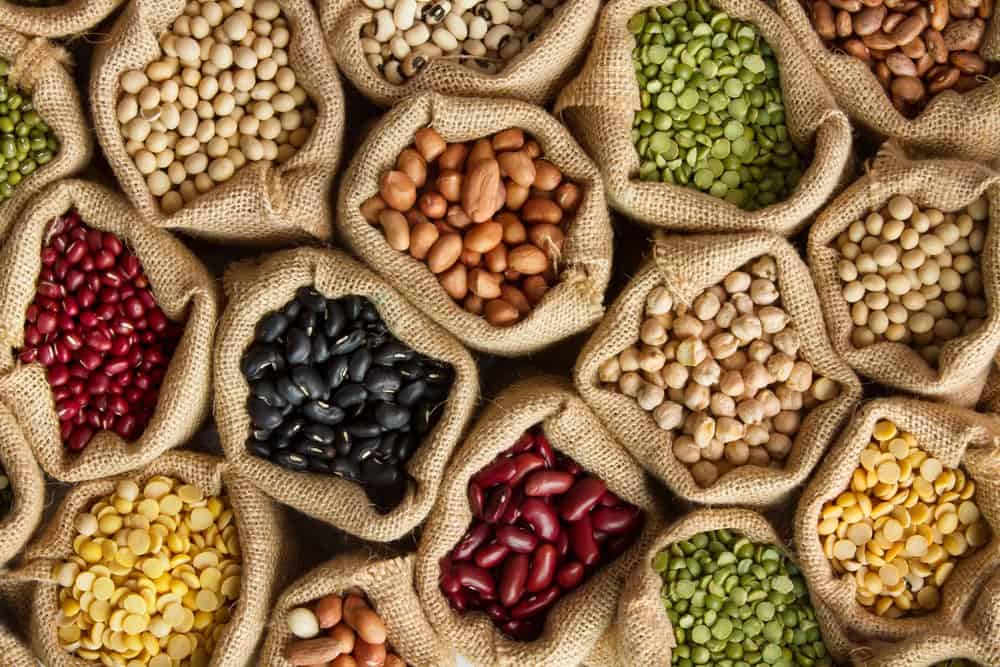
All you need to know about the magic of beans and legumes is right here! People used these terms interchangeably every day, but I doubt if they would eat them interchangeably. Yes, there is a difference between a bean and a legume, but we will get to that.
We all know what beans are, don’t we? I mean, I hated beans when I was a kid, but now, beans are a staple in my home. Pintos, Fordhook limas, speckled butter beans, and many more are all delicious if cooked right. One of my family’s favorite meals that I cook is pinto beans, fried potatoes, fresh ‘homegrown’ tomatoes, and scratch cornbread. Mmmmmmmm! Now, peas, while I love purple hull peas, I have hated green peas all my life, and I am just now starting to try lentils, and I love them.
Magic Guide to 12 Beans and Legumes
Firstly, let us get this part straight:
- Legumes refer to any plants from the Fabaceae family or Leguminosae family, meaning leaves, stems, and pods.
- Pulses refer to the edible seeds from legume plants. Peas, lentils, and beans are pulses.
- For example, when you have ‘two peas in a pod,’ the pod is a legume, and the two peas are pulses.
In the Mediterranean, legumes were some of the plants first cultivated. Lentils, for instance, it is thought, came from the Mediterranean or the Near East. The most aged pulse crop we are aware of, the lentil, is shaped like an itty-bitty UFO or a tiny round ravioli. On archeological digs, lentil artifacts have been recovered from the Euphrates River. These artifacts date back to 8,000 BC. The Bible mentions lentils throughout certain parts.
One well-known story in Genesis tells of Esau giving his birthright to Jacob for a bowl of lentils and some bread. It is believed that they ate green peas as much as 5,000 years ago, dating back to the Bronze Age, because we have found pea seeds in the lake mud underneath where Swiss lake dwellers lived. We humans also found peas that were buried inside a cave in Hungary, which made us ponder whether they may date back further. The earliest we have found proof of beans is in Thailand, over 9,000 years ago.
Beans Nutritional Facts Chart
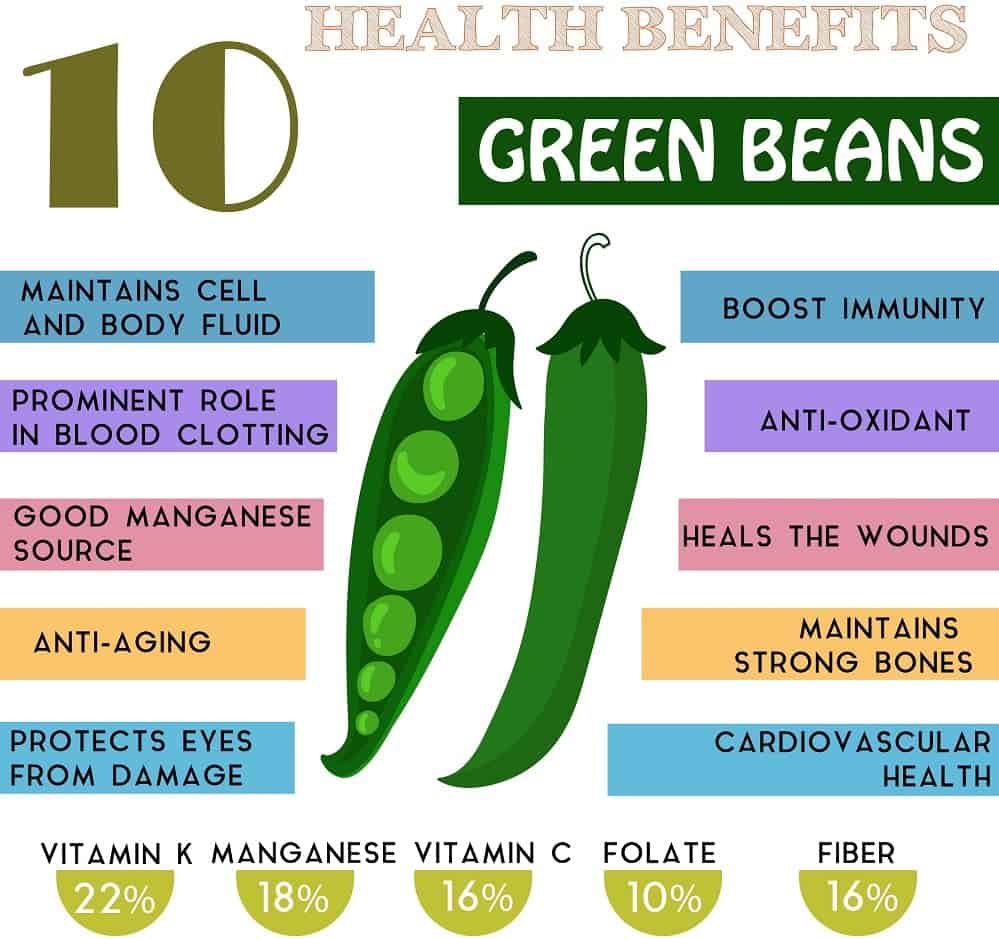
Pink Beans
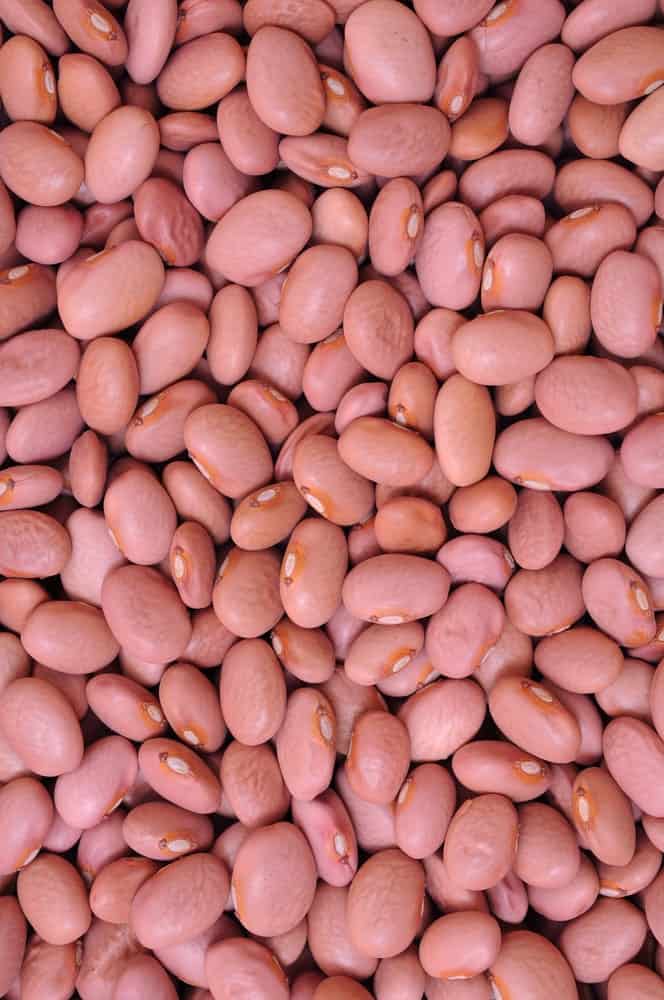
Pink beans, or chili beans, are sort of pinkish brown. They are oval-shaped and plump. In the Caribbean countries, they are popular for their meaty, rich flavor. A prominent ingredient in most Mexican-American, Old West, and BBQ-inspired dishes. Pink beans look quite similar to pinto beans, especially their size. For this reason, you can substitute pinto beans for pink beans.
Because they are the main ingredient in an overwhelming number of BBQ dishes in the Santa Maria Valley in CA, pink beans are often referred to as ‘Santa Maria pinquitos.’ Pink bean plants may grow 14″ tall and make pods 3 1/2″ long. Their texture is smooth and quite fine. When cooked, they become tender and turn reddish-brown.
Black Beans
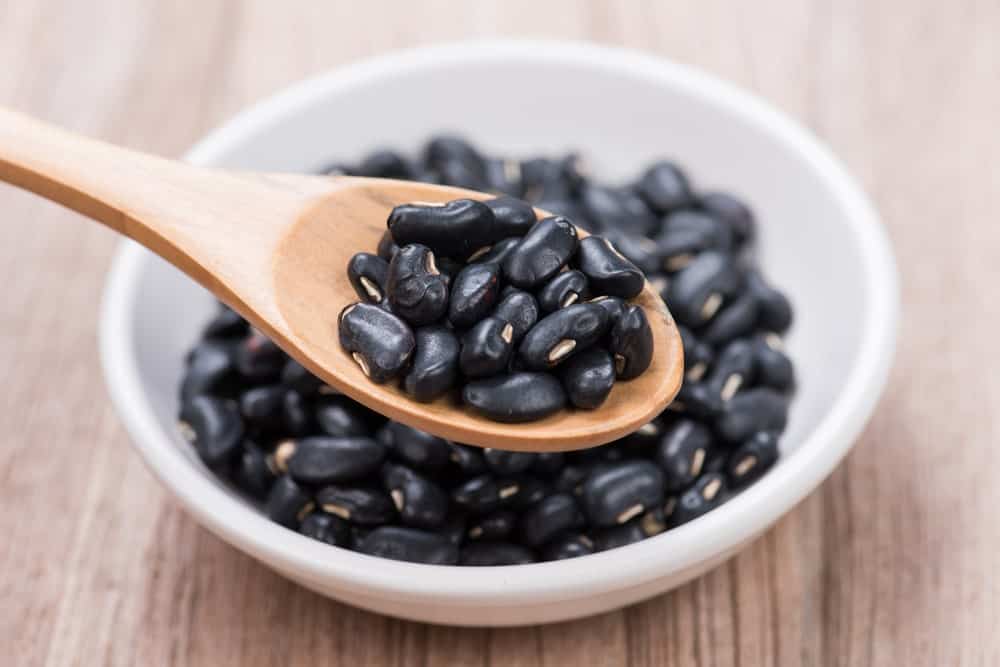
Black beans have dark black skins with grayish-cream-colored flesh. They are oval-shaped and plump. Known also as turtle beans, with a tough, shell-like look. Native to North and South America and popular for use in Latin America, they are also used in the cuisine of South Louisiana and more. They have an earthy, mild, even sweet flavor.
They are very healthy and nutritious, with lots of protein and fiber. Some of the many wonderful benefits of eating black beans are that: it strengthens your bones, reduces your blood pressure, prevent you from getting cancer, helps you lose weight, and helps you control your diabetes. They are great in soups, like black bean soup, which, in Cuba, is a traditional dish that is served oftentimes with white rice.
Roman Beans
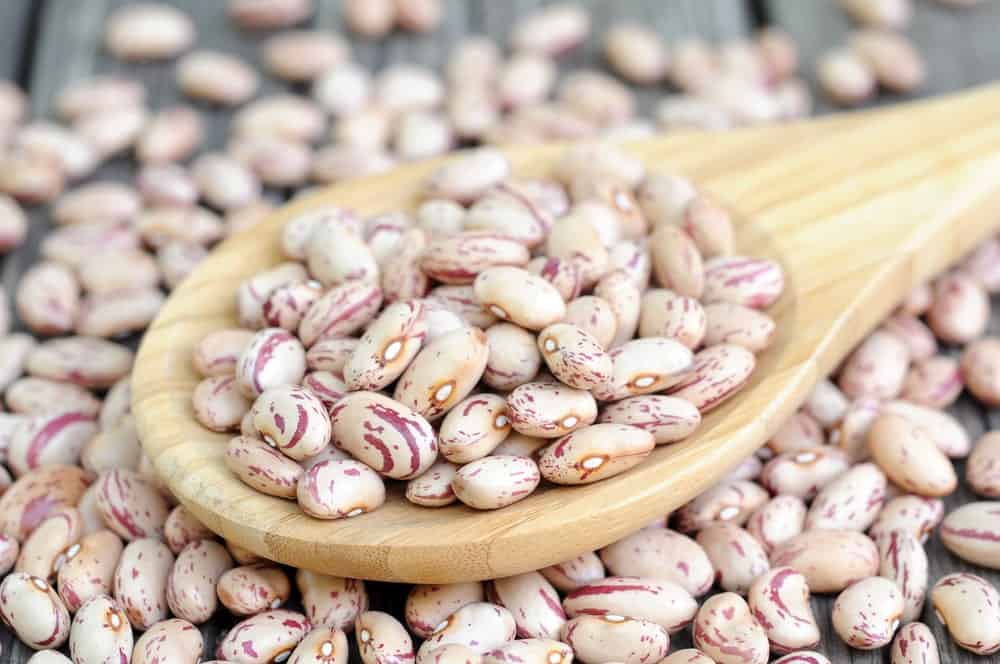
Roman beans, cranberry beans, or speckled sugar beans are oval-shaped and very light brownish-pink with dark-red streaks and speckles. Their taste is similar to that of chestnuts, mild and sweet. Roman beans go well in pasta, salad, soup, or your favorite recipe. They came from Columbia and gained popularity in Italy, where they are known as ‘borlotti.’ When these beans are cooked, all their gorgeous streaks and speckles disappear.
Navy Beans
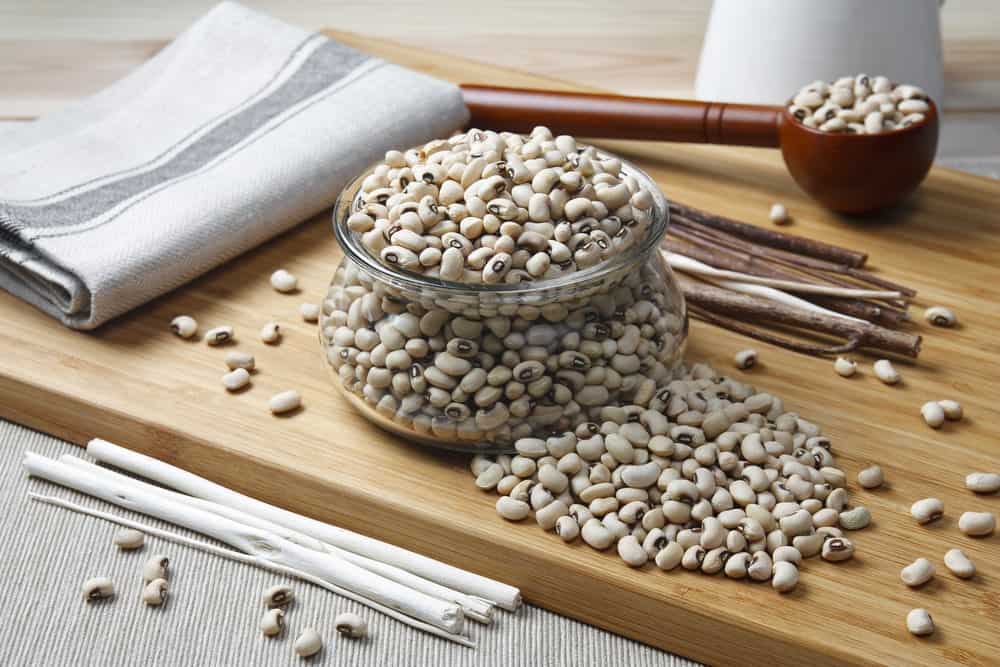
Navy beans, or haricot beans, pea beans, pearl haricot beans, or white pea beans, are for the most part, native to North and South America. They are small and colored creamy-white. They are flat and oval-shaped with a smooth, dense texture. Their flavor is mild.
People eat navy beans mostly for their health. Some of their health benefits include: decreasing the risk of heart disease and stroke, stabilizing blood sugar levels, improving memory, and providing a rich source of fiber and iron. Navy beans make great sandwiches spreads. They are good in salads and soups.
Red Beans
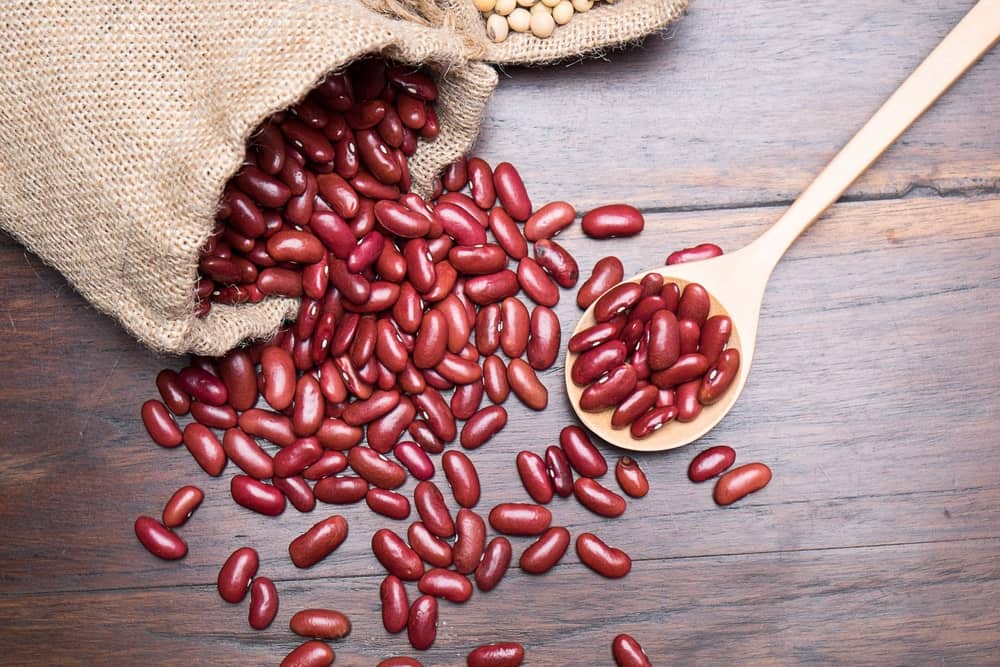
Red beans are oval-shaped and colored deep-red. Known also as adzuki beans, or red mung beans, their taste is nutty and sweet. Creole and Southern cuisines utilize red beans quite often. This is, in large, because of their many health benefits.
Red beans are often used interchangeably with red kidney beans because the two are so similar. Red beans, it is believed, were cultivated in the Himalayas and in East Asia. They are now an epic local favorite in New Orleans, and they are used in various cuisines to make things like stew, soup, red bean curry, and hummus.
Mung Beans
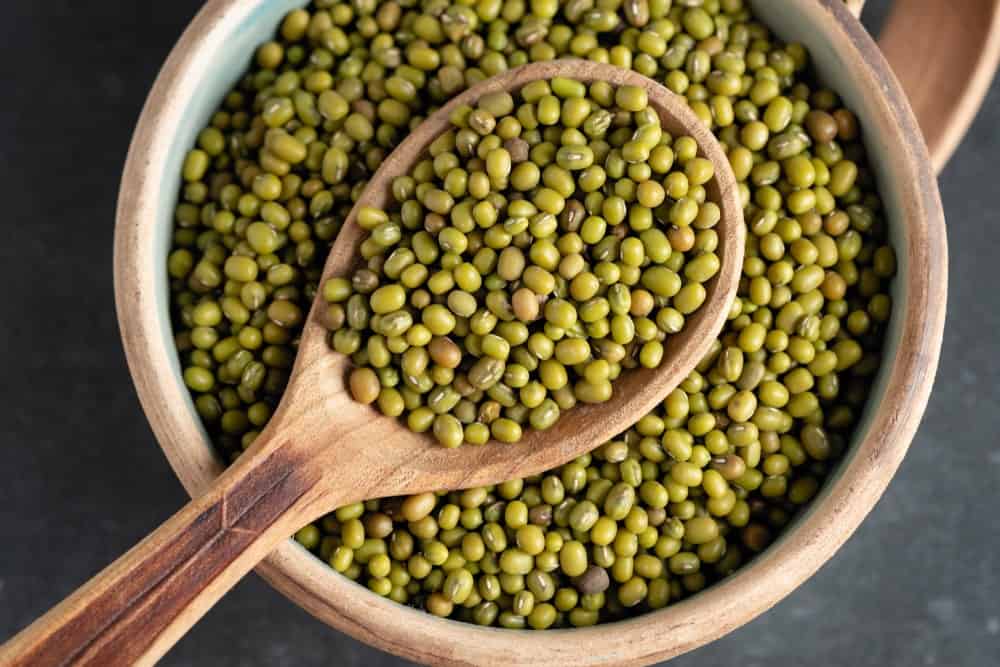
Mung beans come primarily from China, South Asia, India, Pakistan, Nepal, Bangladesh, and Sri Lanka. They are round-shaped and small with green skin and a sort of sweet taste. They work well in both sweet and savory recipes.
Often sold as fresh sprouts or dried beans, the mung bean is full of nutrients like protein, fiber, potassium, copper, zinc, magnesium, and vitamins B2, B3, B5, and B6. It can prevent heat strokes, control your blood pressure, promote your digestive health, and reduce your risk of chronic diseases. Use mung beans in falafel, curries, bean stew, salads, and more.
Split Mung Beans
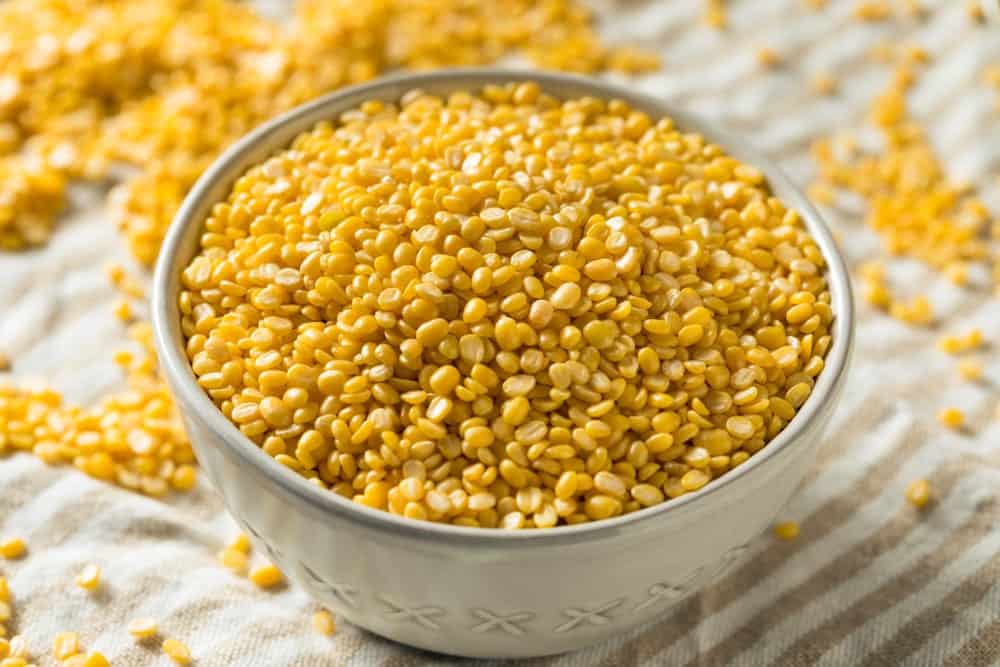
Split mung beans come from whole mung beans after the skin comes off and the beans split, thus making them ‘split mung beans.’ In this form, they are usually colored yellow. These beans taste very similar to sweet peas with their mild flavor. They are eaten for their high protein content in most of Asia.
Split mung beans are full of protein and fiber, along with many other essential nutrients, so many vegetarians and vegans eat split mung beans as a regular part of their diet. Coming mostly from India and Southeast Asia, they are commonly used in mung stew, falafel, mung soup, mung hummus, and protein pancakes.
Soybeans
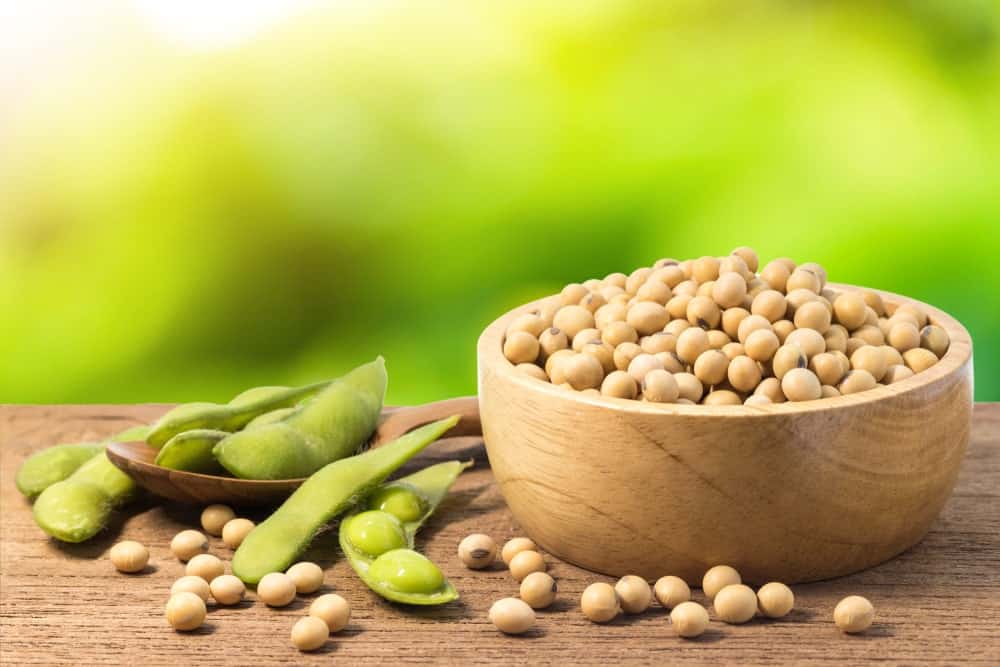
Soybeans, soya beans, or soja beans give us an enormous amount of vegetable protein, the highest of all. They are used in many chemical products as a core ingredient. Until World War II, China was the largest supplier of soybeans. The war halted their supply, and we began to cultivate soybeans in America. Soybeans do not really have a taste to speak of, nor do they absorb flavor. They are mostly used for their protein properties.
Fava Beans
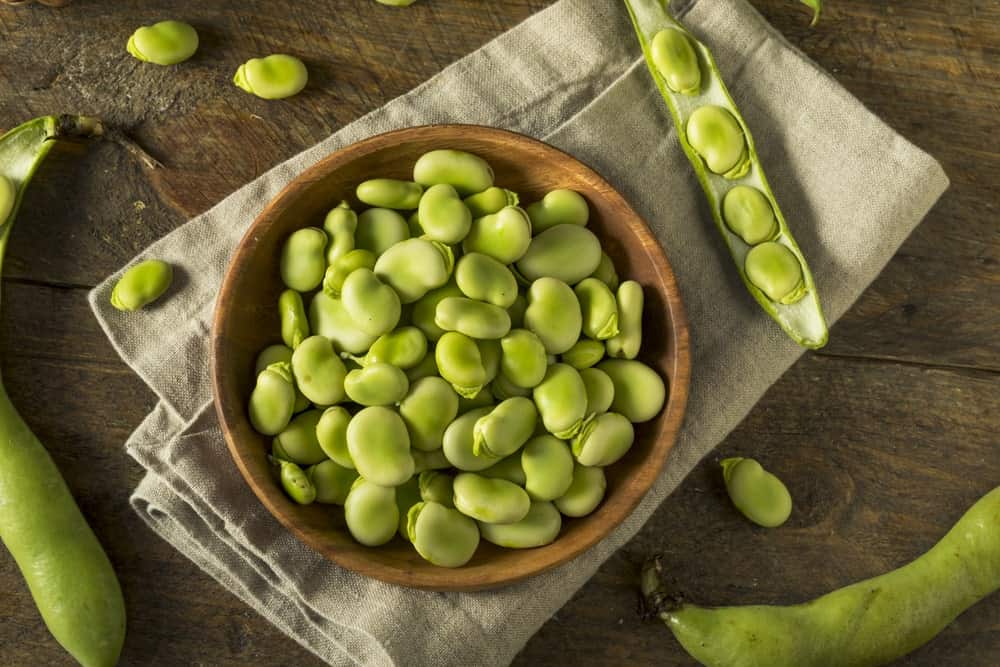
Fava beans, or broad beans, are legumes that are very popular in many Mediterranean and Middle Eastern cuisines. They are often called ‘magic beans’ due to their value to the body. Some of these health benefits include lowering cholesterol levels and improving digestion. Fava beans are a great source of fiber, protein, vitamins, and minerals.
Often used in vegetable soups and pasta, they do have a bit of a bitter aftertaste. In many Latin countries, they are eaten dried and salted as a snack. In Central Mexico, fava bean paste is made and put into corn-flour-based recipes.
Chickpeas
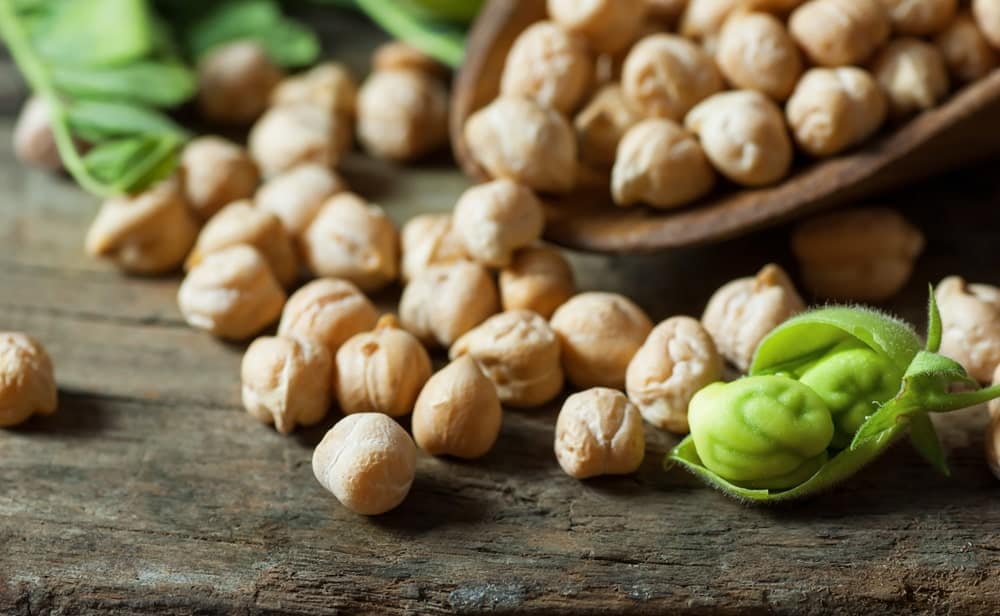
Chickpeas, garbanzo beans, or Egyptian peas are colored yellow and round-shaped with a butter-like texture and a nutty taste. Like beans and lentils, chickpeas have lots of vitamins in them and minerals, as well, best of all, protein and fiber.
Some of the health benefits chickpeas offer are better heart health, less inflammation, better cholesterol levels, better weight control, prevention of cancer, and more. Coming from the Mediterranean and the Middle East, they are great for hummus and falafel but are also good in stew, soup, and salad.
Split Peas
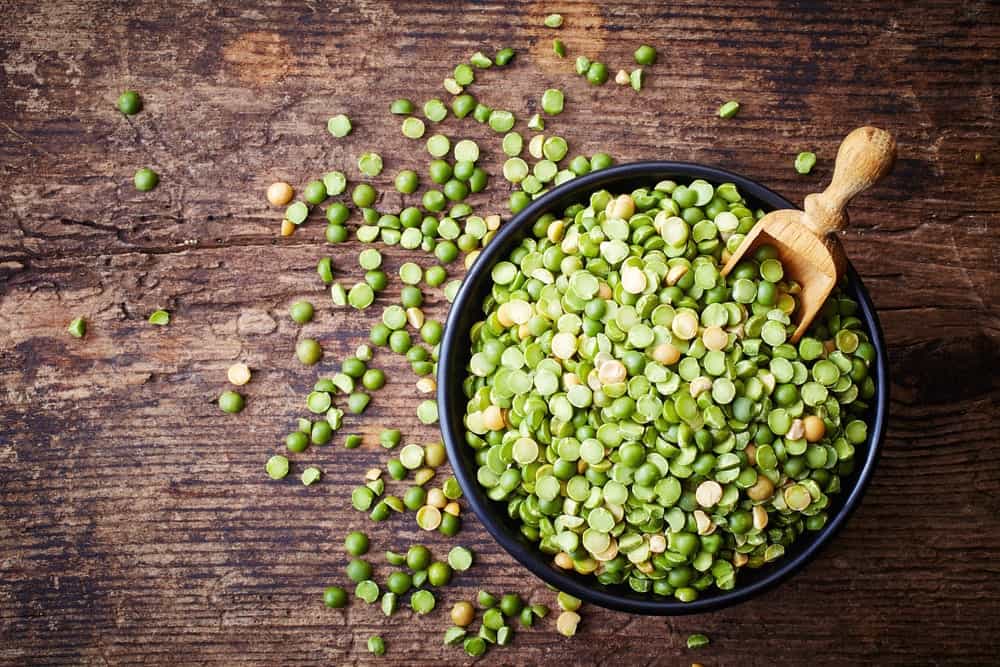
Split peas come in two colors, yellow and green. They are typically called field peas. These peas are known to be epic natural sources of fiber and protein. Split peas come from China, India, Russia, Canada, and the United States. They are also native to Southeast Asia. They were regularly cultivated and eaten by the Romans, the Egyptians, and the ancient Greeks. Some great split pea dishes are split pea soup, ‘dahl’ (an Indian staple), and ‘khoresht gheimeh’ (a Persian stew).
Green Peas
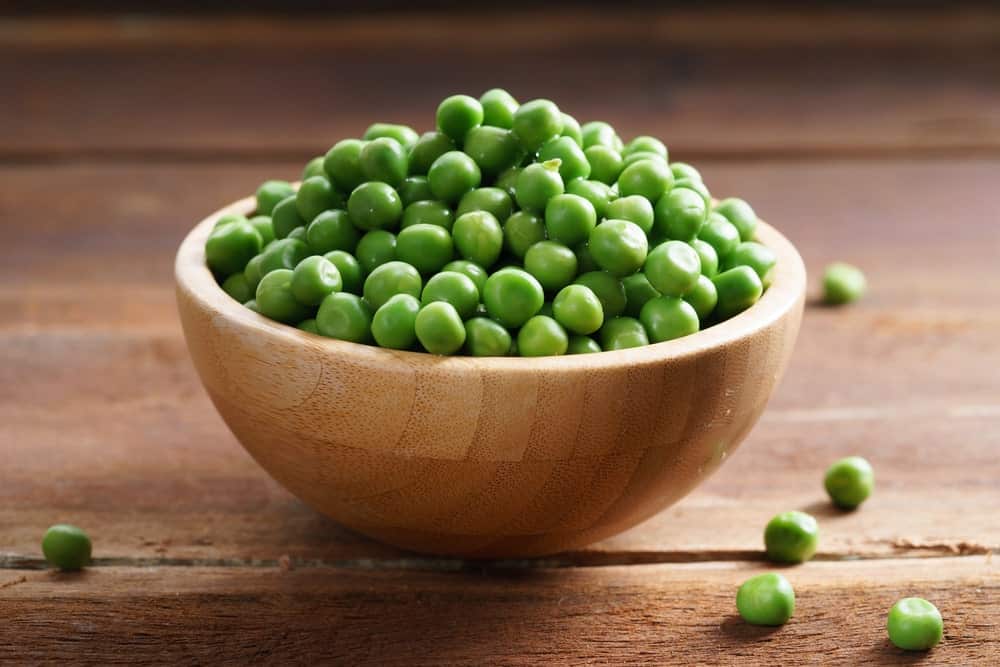
Green peas, or garden peas, are quite versatile peas grown all over semi-tropical regions as commercial crops. Believed to be from the sub-Himalayan plains of northwest India, green peas have been grown since ancient times.
They are tasty and nutritious, considered to be one of the very healthiest legumes in that they are uber-rich in antioxidants, phytonutrients, vitamins, and minerals. Green peas help control blood sugar, improve digestion, and protect you against chronic illnesses like cancer and diabetes. Green peas are wonderful in ravioli and curry.
FAQs
What is the proper way to store basil?
To keep basil fresh, trim the stems and place them in a glass with water at room temperature. Avoid refrigeration, as it can damage the leaves. To extend its shelf life, you can also dry or freeze basil for future use.
Are bay leaves basil?
No, bay leaves and basil are different plants. Bay leaves come from the bay laurel tree, while basil is a herb from the mint family. Their flavor profiles and culinary uses are distinct, and they should not be used interchangeably.
Why is my basil turning yellow?
Yellowing basil leaves can indicate various problems, such as over-watering, under-watering, insufficient lighting, or nutrient deficiencies. It’s essential to regularly check your plant and adjust your care routine accordingly to prevent further deterioration.
Why is my basil wilting?
Basil may wilt for numerous reasons, including insufficient water, excessive heat, or root damage. To identify the cause, monitor your plant’s environment and examine its root system. Address any issues you discover to help your basil recover.
How do you grow and care for basil plants?
To grow basil, sow seeds in well-draining soil, providing 6-8 hours of sunlight per day. Keep the soil consistently moist and protect young plants from harsh weather or temperatures. Prune regularly to encourage bushy growth and remove any dead or unhealthy leaves.
What does basil smell like?
Basil has a robust, aromatic scent often described as a mixture of sweet, herbal, and slightly minty notes. Different basil varieties may have varying aroma profiles depending on their specific characteristics.
How long does a basil plant live?
Basil is an annual plant, meaning it typically completes its life cycle within one growing season. Factors such as environment, care, and variety can affect a basil plant’s lifespan. With proper care, some plants may thrive beyond one season.
How to dry basil in a dehydrator?
To dry basil in a dehydrator, first clean and thoroughly dry the leaves. Spread them evenly on dehydrator trays, ensuring they don’t overlap. Set the dehydrator temperature between 95-115°F and dry for 2-4 hours. Check periodically for crispness and remove leaves when adequately dried. Store dried basil in an airtight container away from direct sunlight.
